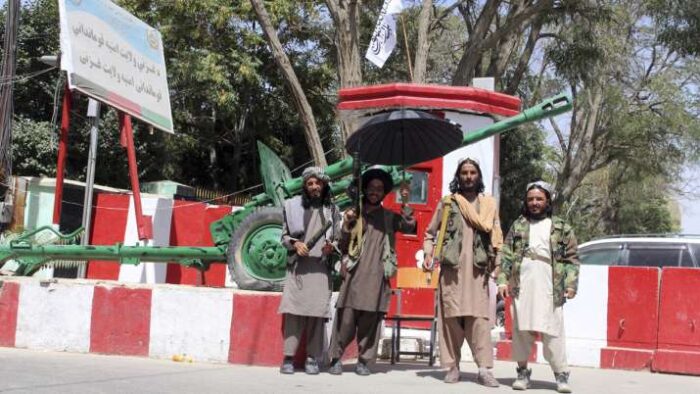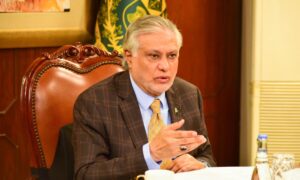
Image : Representational Purpose Only
On 24 th November last Afghanistan completed the first 100 days of Taliban rule – an experience that is unique in the history of South Asia at least for one reason, that is , the regime has not been recognised formally by any country though some like Pakistan and China have their embassies in Kabul and flights between Kabul and Pakistan have been resumed providing thereby international connectivity. The other reasons are; first, Pakistan’s total involvement in Afghanistan as it shares land borders and ethnicity with the dominant Pashtun tribe leading the Taliban which has drawn Pakistan into the Afghan quagmire from which it would be impossible for her to get out in the foreseeable future ; and second no power in Afghanistan neighborhood is now interested in Afghanistan the way the West got involved after 9/11 and perceived Afghanistan’s geopolitical importance for security of the West. US sunk trillions of US Dollars to prop up an Afghan regime and invest in “State building” or building security, administrative and physical infrastructure. India too joined in this effort by extending about US$ 3 billions over the last 20 years to build roads, power generation and Medical and educational facilities. How is the Af-Pak region seen today by the global community is a question one must ask now after 100 days of Taliban rule. The reader may draw his conclusion on the basis of facts summarised below:
Soon after World Bank’s assessment that the Afghan GDP/ economy has shrunk by 30% The Dawn of Karachi carried a report in this month that the situation has worsened and the estimated shrinkage might be about 40% which means collapse of the economy. This is substantiated by the report of the World Food Program that right now 23 million out of Afghanistan’s population of 35 million are in dire straits and 8.7 million Afghans are starving- a humanitarian Catastrophe is unfolding for which the global community is apparently unprepared and doing precious little. In fact international humanitarian aid agencies are not being allowed to function in Afghanistan by the West and bank transactions have been stopped. A return to pre modern economy is indeed seen. About US $7.5 billion of Afghan money kept in the US by the previous Afghan regime has been frozen by the US government which has greatly worsened the economic situation. Contrary to expectations of the Taliban no financial aid is forthcoming either from China or Russia or countries in Afghanistan’s West Asian neighborhood ; and even formal recognition from any Muslim country which have put a question mark in the prospects for survival of the Taliban led government .
Pakistan , the only state which has started” doing business” with Afghanistan is just not in a position to help Afghanistan financially as Pakistan too is nearly bankrupt as evidenced by the facts stated below:
. Pakistan is facing an unsustainably high inflation of 9.7% and her public debt of Rs 39.9 Trillions is now equal to her GDP – an unsustainable position. According to the IMF ,Pakistan needs urgently infusion of US$ 51.6 billion during 2021-23 to tide over the foreign debt crisis and has already been put in the top 10 countries with largest foreign debt. In fact 28% of Pak debt is owed to China and the Chinese demand of US$38 million as compensation@ 39.9 crores of Pak Rupees for each Chinese dead in the recent violence against the Chinese staff engaged in China Pakistan Economic Corridor project has worsened the financial situation. On top of it, the estimated damages caused to the Pak economy due to Pakistan being put in the FATF Grey list were to the tune of US$ 38 billion for 2018-19 which must have gone up by now while Pakistan’s export/ foreign exchange earnings earnings from merchandise exports have remained static at about US$ 23 billion since 2019. In fact annual remittances Pakistan received were higher than her exports – about US$ 28 billion in 2018-19 which reflects a stagnant economy incapable of playing an active role in Afghanistan as money is presently the” currency of power” in Afghanistan’s relations with her neighbours.
The Pak Afghan border regions have become volatile as Afghans are freely moving across as though the Durrand Line laying down the Pak Afghan border doesn’t exist. This is no doubt an indirect way of asserting the line that every Afghan government took including the Taliban before 9/11 since the creation of Pakistan in 1947 of not recognising the British imposed Durrand line as the border as it divided the Pashtun people. In fact the Pashtun leaders of Pre 1947 opposed to inclusion of Pashtun dominated North West Frontier Province in Pakistan and preferred to join India or remain independent. Despite all attempts to change the administrative boundary and demographics of the region by adding non Pashtun areas to the present Khyber Pakhtunia province, the border region with its population of about 3.5 crores continues to be mainly Pashtun inhabited. This must have been a cause for serious worry for Islamabad as borders cannot divide a society and Taliban take over is really the re emergence of a Pashtun dominated government in Afghanistan as it was till the abdication of King Zahir Shah in 1978. In fact Afghanistan hasn’t known peace since then.
In this background the Pak govt report of about 25-30 thousands of Afghans crossing every day to Pakistan and going back , and that close to 70% of the huge number of Afghans who have been staying in Pakistan stay outside the ” camps” and have mingled with the local population of the border regions indicate a situation where the Pak authority is losing its control over the sensitive region. This is an ominous development given the Afghan stand on the frontiers .
In this evolving situation, the Pakistani hope to see Afghanistan as a country providing “strategic depth” to her security against India appears far fetched even to a pro Pakistan observer; because Pakistan is really not in need of it for the simple reason that Kashmir is not that important for India to mount an attack on Pakistan unless Pakistan instigate the same as it did in 1965 and in 1971. Under the terms of the Simla Agreement between India and Pakistan on bilateral relations signed on July 2 1972 after liberation of Bangladesh, the Ceasefire line in Jammu and Kashmir was converted into the Line of Control which by implications of the Agreement is inviolable by the parties of the Agreement. As India stands by the LOC it is Pakistan which has been trying to disturb peace by ” cross border” terrorist activities which given the strength of the Indian military build up in J and K and deployment along the LOC are unlikely to succeed in any measure. On the contrary, Pak sponsored terror groups have destabilized the region bordering Afghanistan also for the simple reason that their activities are overlapping in nature and control of Pakistan’s ISI- Inter Services Intelligence over the terrorist organisations is at the most tenuous. This is seen in the activities of Tehrik-i- Taliban- I – Pakistan- TTP for short whose terror attacks in Pakistan caused about 80000 deaths in Pakistan and it is active in Af Pak border regions inhabited by the Pashtuns. Obviously TTP is Pashtun led. The extreme form of Radical Islam that Taliban is determined to impose in Afghanistan has led to rise of a similar terror outfit in Pakistan- Tehreek-i- Labbaik i Pakistan which is causing wide spread violence in Pakistan by its attacks on the Shiya and other minority groups adding to miseries of the Pak society and economy by putting a severe strain on the administration. However TTP ‘s inability to stem the Islamic state outfit- IS Khorasan in Afghanistan poses a serious threat to Taliban in some parts of Afghanistan which is bound to destabilize Afghanistan further. The track record of IS-Khorasan after Taliban take over in Afghanistan is awesome- 334 attacks targeting the Shia minorities.
This being the ground reality the response of the countries in Afghan neighborhood is best summed as one of ” wait and watch” only. The Delhi meeting convened by India’s National Security Adviser was not attended by Pakistan and China only stressed that Afghan territory must not be used to launch terror attacks on other countries nor to host such groups in any manner which is fair enough but didn’t address the core issues such as laying down the norms of internal governance the Taliban regime must follow to gain international recognition or aid in any form. Afghanistan is just drifting with no prospect of tangible support from any country in the neighborhood such as China or West Asian countries as every country is wary of getting sucked in the Afghan quagmire – a bottomless pit that few could really understand or wish to get into it. Pakistan is certain to be the worst sufferer as denied now of US bankroll, it has no means to bear the huge cost of maintaining the ” Afghan connection” and China is unlikely to step in given the complexity of the Afghan ethnic situation , absence of the basic structure of a modern state such as sensible land laws,law enforcement and criminal justice or financial systems without which ” aid” doesn’t lead to development . The fact Taliban is committed to put in place a Sharia based political and social order any concrete support from China or Iran and even her Central Asian neighborhood is ruled out.
This means that Pakistan is left high and dry carrying the Afghan burden without any of the collateral benefits her ruling elites enjoyed for decades after 9/11 from US intervention even when they clearly double crossed such as the act of providing shelter to Osama bin Laden. Though it is somewhat early, it may not be unrealistic to foresee the steady decline of the Pak state’s capacity to address the core political and economic challenges such as the Baluch separatist militancy, Sindhi demands for a favorable Indus water sharing arrangement with Punjab and increasing dependence on Chinese aid for its fledgling economy and infrastructure. The implications of these developments in the Af Pak region and Pakistan in particular are enormous and merit a strategic review by India’s strategic think tanks from right now.
[the_ad id=”41101″]


















